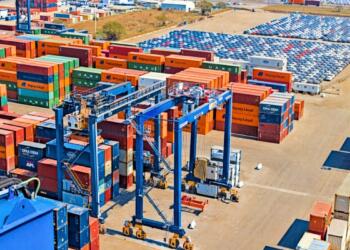
Incorporating Artificial Intelligence (AI) into trucking is an alternative for making better decisions , focusing on productivity, and addressing the challenges of property and road safety allows for more assertive action.
Tecnomotum convened clients from the northeast region to present the topic: “From Data to Decision: Artificial Intelligence that transforms freight transportation” , and where various key messages were raised, one of them, from Pedro Rivera , CEO of Tecnomotum , who described that AI is required to take advantage of the sea of alerts that are generated today through the systems that the units have, and where this type of solutions based on AI allows to identify risks in operation and not only address asset security .
“There’s more and more data out there. At Tecnomot}um , we aim to unite various systems and leverage all available information, such as ADAS systems in trucks,” Rivera said.

Pedro Rivera was emphatic that AI must be incorporated into business operations to be more efficient, make more accurate decisions, and achieve better use of resources.
Carlos Cota, Vice President of Revenue at Tecnomotum , recalled that in 2015 they began the Enlace Freightliner integration to develop a platform that would allow the use of technology for logistics purposes, but now through the incorporation of AI the goal is to make their operation simpler , with Enlace Freightliner 3.0 (EFL 3.0) .

“Intelligence now allows us to identify all alerts and which ones need to be addressed in order to avoid a potential accident, making us more assertive in our decision-making,” Cota noted.
The executive emphasized to the transporters that one advantage Tecnomotum has is the development of products tailored to the Mexican market and the real-life working conditions they face.
Carlos Cota recommended that carriers evolve by converting monitoring centers into intelligence centers, which will have the following advantages:
- Intelligent alert assignment.
- Alert segmentation by risk.
- Automation of actions.
- Neurovision and automated reports.
- Discover how to turn your monitoring center into an operational intelligence center .
While this solution is integrated into EFL 3.0, it can be implemented on any truck or tractor-trailer model to achieve the benefits mentioned.
A practical example of how Artificial Intelligence supports decision-making is the following: “It takes AI less than two minutes to analyze 60,000 alerts generated by the units; in a highly efficient action, it would take a monitor 480 hours,” described Javier Altamirano, Director of Product Marketing at EFL 3.0.

Altamirano explained that the advantages of EFL 3.0 can be described in three areas: first, the ability to group alerts into three lanes: possible vehicle theft, fatigued driving, and possible accidents, “allowing us to find the needle in a sea of alerts . “
In the case of road safety, the Dangerous Driving Meta-Alert module allows the monitoring center to reduce risk through preventive alerts. Calls are made by a robot through the Neuropanel, and actions can be automated according to the defined processes.
The previous one is the second lane, automation.
While the third lane is determined by creating alerts on cameras with AI, “this function allows us to identify the correct operator, recognize objects that should not be in the cabin, all of this is done by Motum on our supplier’s original camera, which is the added value we give to our market offering ,” Javier Altamirano asserted.
The approach presented by Tecnomotum executives generated a shift in perspective for some of the transporters present, motivating them to be more receptive in order to obtain greater benefits from Artificial Intelligence.
Comment and follow us on X:@GrupoT21















